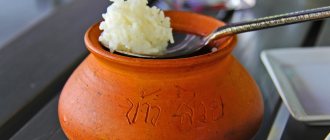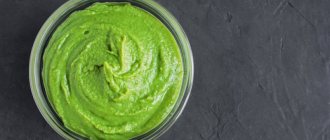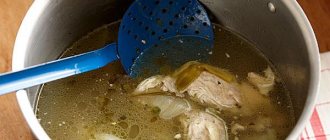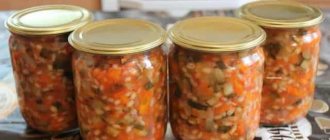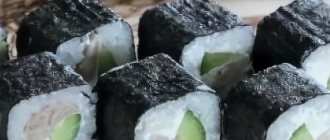What is rice vinegar used for?
Rice vinegar is a key ingredient in Japanese cuisine. If you prefer to make rolls and sushi with your own hands, you cannot do without this ingredient.
Firstly, it has a very delicate, subtle taste that perfectly highlights the dish. Secondly, this vinegar has antibacterial properties. This is very important, because sushi and rolls often contain raw fish.
Inexperienced cooks sometimes replace rice vinegar with wine vinegar, apple cider vinegar, or even regular vinegar. This is where they make a mistake, since the taste of these seasonings is very different and can easily ruin the dish. There are several different recipes for making a great alternative to rice vinegar.
50 ml table vinegar;
50 ml soy sauce;
20 g sugar.
Combine all ingredients in one container and stir until the sugar is completely dissolved.
4 tbsp. l. grape vinegar;
3 tsp. Sahara;
1 tsp. salt.
Mix the ingredients and place the mixture on low heat. Stir it until the salt and sugar dissolve, but do not bring the mixture to a boil. Give the finished sauce time to cool and brew.
1 tbsp. l. apple cider vinegar;
1.5 tbsp. l. boiling water;
0.5 tsp. salt;
1 tsp. Sahara.
Stir the ingredients until the salt and sugar dissolve and a homogeneous liquid forms. There is no need to heat the sauce for this recipe, but it is important to use very hot water so that the ingredients “play” together.
It is important to maintain the exact proportions in each recipe, otherwise you will not achieve the desired taste. Add salt and sugar by level teaspoons. When pouring vinegar or soy sauce, do not rely on your eye, but use a measuring cup or kitchen scale. Take your time mixing the seasoning. Poorly dissolved particles of salt or sugar will ruin all your efforts.
Now you know how to replace rice vinegar. Choose a recipe to suit your taste and start cooking. Be sure to pamper your loved ones with delicious rolls and sushi, because homemade versions of these dishes are more soulful than restaurant ones.
Gained fame in our country thanks to the growing popularity of Japanese cuisine. After all, it is this spice that is used as vinegar for preparing rice, which is part of rolls and sushi.
However, the availability of Asian sous is not widespread at the moment and ways may be needed to replace the overseas seasoning with similar ingredients without losing its beneficial qualities.
Finding an alternative is not a futile exercise for several reasons:
- Most “spare” recipes are based on other types of vinegar (, etc.), so the body will easily receive a portion of the necessary amino acids.
- The taste qualities when replacing one type with another practically do not change, unless the initial concentration of the solution is exceeded. Asian sous is soft and neutral, so the strength of alternative ingredients should not be higher than 3%-4%.
- Substitute recipes, while preserving the features of the original, add new flavor notes and other components important to the body to the seasoning.
There are many interesting alternative ways to prepare this seasoning. Most of them are easy to do at home without major financial outlay.
What to replace: recipes from available products
An arsenal of substitutes is stored in every refrigerator or kitchen cabinet. Such commonly available products include lemon, soy sauce, vinegar, ginger, etc.
Apple and wine cider vinegar dressing
Despite the large number of substitutes, the most delicious for connoisseurs of Asian cuisine is still homemade rice vinegar or, “in a hurry,” store-bought.
This is interesting! The production and consumption of rice vinegar began two thousand years ago. Contrary to popular belief, the birthplace of this seasoning is not Japan, but China.
Rice vinegar is an unusual and unique product that is widely used in cooking, medicine and the beauty industry. It has a rich centuries-old history and many options for replacement. It is important that most analogues, along with the original, have a beneficial effect on the body, providing it with amino acids and other equally useful substances.
Rolls and sushi quickly entered our daily lives and became favorite dishes for many. Today, you don’t have to go to a restaurant to enjoy Japanese cuisine, because you can easily prepare sushi and rolls at home, you just have to go to the store and buy the necessary ingredients to prepare them.
If you follow the recipe, the dishes you make at home will be no worse than those in restaurants. However, sometimes it happens that the necessary products are not at hand, and questions often arise as to what can be replaced with them. In this article we will talk about what kind of substitute you can find for rice vinegar.
Vinegar for nori and sushi is sold mainly in specialized supermarkets
and, unfortunately, is not found on store shelves as often as we would like. The reason for this is the high cost of the product and low demand among buyers.
Therefore, it became possible to replace it with other equally tasty and high-quality dressings that you can prepare yourself. Many housewives have learned to solve this problem; they generously share their opinions and recipes on food blogs and forums.
What to replace
Unfortunately, it is quite difficult to find - even large specialized stores sometimes do not have this ingredient. Therefore, we will tell you how you can replace rice vinegar so as to get the closest possible taste of the finished dish.
Other types of vinegar
Unfortunately or fortunately, we are in Russian realities - which means we will have to find alternative options. Hence the question, can rice vinegar be replaced with regular vinegar? You will be surprised, but yes!
However, it is important to note that you cannot take pure essence - you must follow a special recipe for preparing the dressing. First, let's talk about how rice vinegar is replaced with apple cider vinegar.
Recipe
This product is rich in amino acids, leaches the blood, neutralizes lactic acid and stimulates digestion.
. The seasoning is aromatic and has a slight sour taste. Sushi lovers can learn how to prepare this addition to the dish themselves, using short-grain rice, dry yeast and sugar.
You will need:
- 1/3 tsp. yeast;
- water - 0.25 liters;
- 3 tbsp. l. Sahara;
- a glass of rice.
Cooking method
:
You need to pour the rice into a jar, add water and leave it on the table for 4 hours, then put the jar with the contents in the refrigerator and keep it there overnight. The next morning, you need to strain the rice (no need to squeeze it out) and transfer it to another container; Pour the liquid into a glass and add warm water until the glass is full.
Then you need to add sugar to it and mix with a wooden spoon. After this, you need to prepare a water bath: pour water into a special container and put it on fire. When the water in the container boils, you need to place a glass with the prepared liquid in it for 20 minutes.
After this time, you need to take out a glass and cool the contents in it, then pour the liquid into a jar, add dry yeast, stir, cover with gauze and leave to ferment for 7 days. Do not cover the top with a lid, because... air must flow freely to the yeast bacteria. The completion of the fermentation process can be determined by the absence of bubbles in the jar.
After a week, the fermented solution must be left to infuse for another 1 month and only then filtered
. Then the liquid needs to be boiled (the mixture will be cloudy). If the color of the sauce is confusing, you can lighten it. To do this, add the pre-beaten egg white and filter again.
The rice sauce is ready. It must be poured into a clean glass container, placed in the refrigerator and closed with a lid.
Recipes for substitutes
In order for the taste of rice vinegar substitutes for sushi to be as similar as possible to the original, they must be prepared according to special recipes, using aromatic ingredients with a slight sour taste
Grape vinegar dressing
Required ingredients:
- 5 tbsp. l. grape vinegar;
- 5 tsp. Sahara;
- 1 - 2 tsp. salt.
To prepare the dressing, you need to pour grape vinegar into a small container, add salt and sugar to it and put on fire. There is no need to bring the mixture to a boil; just heat the solution over low heat until the salt and sugar dissolve. After that, the prepared mixture must be cooled and added to the sushi.
White vinegar dressing
If there are no contraindications to the use of white vinegar, then you can safely prepare a dressing for sushi from ordinary table vinegar 6%, using the following recipe: for preparation you will need 2 tbsp. l. vinegar, tbsp. l. sugar and 2 tbsp. l. soy sauce.
By combining white vinegar with soy sauce, you can add a special flavor to your favorite dish.
. The preparation method is similar to the previous recipe, which contains grape vinegar.
Applesauce
For preparation you will need:
- 5 tbsp. l. apple cider vinegar;
- 3 tbsp. l. hot water;
- 3 tsp. Sahara;
- 3 tsp. salt.
The products must be poured into a glass and stirred with a wooden spoon.
Lemon juice seasoning
If lemon juice is diluted correctly, it can also reproduce the taste as close as possible to the original.
. The difference will be almost imperceptible; only native Japanese will be able to determine it.
To prepare seasoning from lemon juice, you need to stir 5 tbsp in a glass. l. lemon juice, 4 tbsp. l. warm water, 2.5 tsp. salt and sugar. If the water in the glass has cooled quickly, the resulting mixture can be heated over low heat without bringing it to a boil.
If there is nori
If you have seaweed in your kitchen, you can also get a dressing option similar to Japanese rice sauce. Do not confuse algae with kelp
, otherwise the prepared product will not turn out and will be bitter.
You will need:
- 50 g vinegar (grape, table, apple);
- 1 - 2 sheets of nori;
- 5.5 tbsp. l. Sahara;
- a pinch of salt.
All products, except nori, must be heated until dissolved and removed from heat, then add seaweed. It is allowed to add them half as much as required according to the recipe, this will not spoil the product; finely chop and beat in a previously prepared solution until smooth.
The use of grape vinegar in folk medicine
The use of grape vinegar for medicinal purposes existed during the heyday of ancient civilizations. Treatment with wine vinegar was practiced in Ancient Egypt, Babylon, Rome and Greece. Nowadays, this product has not lost its popularity as a folk remedy. Its properties are used in the fight against a wide range of ailments, including gout, gastritis, varicose veins and joint diseases. It also helps with colds, intestinal diseases, relieves toothache and warts.
From temperature
A very effective method of reducing fever is wiping with grape vinegar. Compared to alcohol rubdowns, vinegar has a gentler effect on the patient’s weakened body. It evaporates more slowly from the surface of the skin and does not provoke vasospasm, which occurs when the body suddenly cools down.
Vinegar rubbing is carried out at temperatures above 39°C. It is most suitable for adults and children over 4 years of age.
Important! This procedure is not recommended for young children, as recent studies have shown that acetic acid can be absorbed through the skin and harm the child’s fragile body.
To prevent wiping from causing harm to health, it is important to be able to properly prepare the solution. For this:
- Water and grape vinegar are diluted in a 1:1 ratio. The dilution container must certainly be glass or metal. Ceramic containers and plastic, when reacting with acid, release harmful compounds, which can then enter the patient’s body.
- Using a rag soaked in the solution, first treat the palms and feet, then the whole body, paying special attention to the neck, elbow bends, armpits and popliteal fossae.
A compress soaked in such a solution and placed on the forehead has no less effect. You can also soak a sheet in the liquid and wrap the patient in it.
Rubbing of this kind will help reduce fever quickly and without harm to a person. However, it is worth remembering that if the high temperature continues to persist for 2 or more days, you must immediately seek help from a medical facility. Self-treatment of serious diseases can be dangerous to life and health.
For joint pain
For various joint diseases, such as arthritis, compresses made from wine vinegar can be of great service. To prepare them you need:
- Pour 6 cups of warm water into a deep container.
- Add 1 glass of vinegar.
- Soak gauze in the solution and apply to the inflamed area for 25-30 minutes.
An alternative to a compress can be foot and hand baths made from such a solution.
You can also prepare a mixture of 1 part olive oil and 2 parts vinegar to rub on sore joints.
For colds
Inhalations based on grape vinegar will help overcome a dry cough and runny nose:
- Vinegar is mixed with water in a 1:1 ratio.
- In an enamel or metal pan, heat the mixture to 85 - 90°C.
- Cover the head with a towel so that it completely covers it, capturing the pan.
- Breathe in pairs for 5 minutes.
Such inhalations should be done every other day for 7-10 days.
For gastritis
Some alternative medicine proponents claim that wine vinegar successfully treats gastritis. However, this statement is very controversial and requires some clarification.
As a rule, gastritis has two forms: with low and high acidity. If the disease is accompanied by increased acidity, consuming vinegar, which is essentially an acid, is strictly prohibited. The product will only aggravate the disease and cause serious harm to the body.
If the acidity is low, then grape vinegar can be beneficial. It is allowed to be added to food in small quantities and taken orally as part of a honey solution:
- 1 tsp. vinegar and 1 tsp. honey is diluted in a glass of water and stirred.
- Drink once a day after meals for no longer than 14 days in a row.
Important! For all forms of gastritis, it is forbidden to consume wine vinegar on an empty stomach.
For constipation
Grape vinegar is also useful for constipation. To speed up the body's metabolic processes and cleanse the intestines, adherents of alternative medicine recommend the following recipe:
- Pour 2 cups of water into the pan.
- Add 2 tbsp. l. flaxseeds and simmer over low heat for 15 minutes.
- Strain the resulting broth.
- Pour 1 tsp into it. grape vinegar and mix thoroughly.
- The mixture should be drunk slowly, 1 glass per day 1 – 2 hours before bedtime.
It is worth continuing this course for 2 days, combining it with a diet of cereals, vegetables and low-fat dairy products.
Mixture for warts, calluses and scabies
The beneficial properties of grape vinegar have proven themselves against various skin diseases. You can get rid of scabies and warts using the following infusion:
- 5 crushed cloves of garlic are poured with 500 ml of wine vinegar.
- Mix and put in a dark place for 10 days.
- The resulting infusion is applied to the damaged area 3 times a day.
The course of treatment is continued until the skin lesion is completely restored.
For toothache
Wine vinegar is also effective in relieving toothache. To do this, just soak a piece of cotton wool in it and apply it to the sore tooth. Hold the cotton wool until the pain subsides, changing it every 10 minutes, as the substance is quickly washed away by saliva.
For gout
Grape vinegar compresses will help relieve the symptoms of gout:
- In a metal container, dilute 1 part grape vinegar and 1 part warm water.
- Clean gauze is moistened in liquid and applied to the sore spot. The compress is left overnight. If necessary, treatment is repeated for 2 weeks.
Treatment of varicose veins and thrombophlebitis
Grape vinegar can significantly reduce pain from varicose veins and thrombophlebitis. It is enough to rub vinegar into your feet every day before going to bed, either pure or diluted in water. Then you need to wait until the solution is completely absorbed and go to bed. This method will reduce pain in the legs and increase the elasticity of blood vessels.
For tinnitus
For people suffering from tinnitus, traditional healers advise this way of dealing with an unpleasant illness:
- Dissolve 1 tsp in 1 glass of water. honey
- Add 2 tsp. natural wine vinegar.
- Stir.
- Take 3 times a day with meals. The duration of treatment is 3 weeks.
Tinnitus, as a rule, can be a symptom of diseases of the cardiovascular system or atherosclerosis. The vinegar-honey solution will supply the body with useful microelements and vitamins and normalize blood sugar levels. This will help get rid of unpleasant sensations, but only a doctor can find out the cause of their occurrence.
For foot fungus
Grape vinegar also successfully copes with fungal infections. To get rid of foot fungus, you should:
- Pour 10 liters of warm water into a deep container.
- Add 500 ml of wine vinegar.
- Immerse your feet in the container for 20 - 25 minutes.
- At the end of the procedure, wipe your feet dry. Repeat until the fungal infection completely disappears at intervals of 2 times a week.
How to Add Dressings to Cooked Rice
After preparing rice sauce or its substitute, it is important to properly combine the dressing and cooked rice
. To do this, you need to use only wooden utensils (spatula, spoon, bowl, pot).
After the rice is cooked, cool it and carefully place it in another wooden container with a wooden spatula, then pour the dressing over it and stir. You need to stir very slowly, so that the rice that is on top ends up at the bottom; vigorous stirring will turn the rice into porridge.
After soaking the rice, you can start preparing rolls and sushi using a variety of cooking options.
Many people fear that such recipes will ruin sushi and rolls, but experienced chefs refute this opinion. They recommend adding ingredients strictly according to the recipe, and then the result will certainly please you.
How to make rice vinegar in your kitchen
If you like sushi and make it often, learn how to make your own rice vinegar. To do this you will need short grain rice, sugar and dry yeast.
- Pour 1 cup of rice into a jar and add 0.25 liters of water and leave in the room for 4 hours. Place the mixture in the refrigerator and keep it there overnight.
- The next day, strain the rice, but do not squeeze it out.
- Pour the liquid into a glass and add warm water to the top.
- Add 4 tbsp to the solution. sugar and dissolve it, stirring the syrup with a wooden spoon.
- Place the container with liquid in the water bath. Wait until the water in the water bath boils and keep the bowl with the syrup there for 20 minutes, then remove.
- Cool the broth, pour into a jar, add 1/3 tsp. dry yeast and stir.
- Cover the jar with gauze and leave to ferment for a week. Do not cover the jar with a lid to allow air to flow freely to the yeast bacteria.
- After about a week, the fermentation process will end and there will be no more bubbles in the solution.
- The solution should be infused for a month.
- Filter the solution and boil. The mixture should be cloudy, this is its normal color.
- To clarify, you can add beaten egg white to the solution while boiling, and then filter again.
- Pour the finished product into a glass container and place in the refrigerator.
Rice Vinegar Substitute Recipes
To ensure that the taste of the seasoning is as similar as possible to the original product, prepare it from several components according to special recipes.
Grape vinegar seasoning
Pour grape vinegar (4 tbsp), salt (1 tsp), sugar (3 tsp) into a small container and place on low heat. Heat the solution until all components are dissolved. Make sure the mixture does not boil. Do not use wine vinegar for these purposes if you are allergic to grape products or have increased stomach acidity.
Apple Cider Vinegar Seasoning
You will need 1 tbsp. l. apple cider vinegar, 1 tsp. sugar, 0.5 tsp. salt and 1.5 tbsp. l. hot water. Pour everything into a glass and stir with a wooden spoon until the elements are completely dissolved.
Seasoning made from table vinegar and soy sauce
Take 50 ml of 6% table vinegar, 20 g of sugar and 50 ml of soy sauce. Mix everything until the sugar and salt are completely dissolved.
Lemon juice seasoning
Properly diluted lemon juice can reproduce the taste of rice vinegar. Only the native Japanese will determine the difference.
Pour 2 tbsp into a glass. boiled warm water, 2 tbsp. lemon juice, 1 tsp. sugar, 0.5 tsp. salt. Mix everything until the contents are completely dissolved. You can heat the mixture, but you cannot boil it.
Many people have concerns that alternative recipes will spoil sushi and rolls. Experienced chefs refute this opinion. They recommend not to overdo it with the amount of seasoning, then the result will please even gourmets.
Rice vinegar is a healthy product that is used to prepare oriental dishes. This is a mandatory ingredient for rolls and sushi, which cannot be excluded from the recipe, but can be replaced.
Summarize
- Rice vinegar and rice wine are made from fermented rice. However, vinegar goes through additional processing steps to remove the alcohol and produce acetic acid.
- These differences in processing create completely different products that are used for different purposes.
- Rice wine is ideal for both cooking and drinking. The most popular varieties are Huangju, Mirin and Sake. If you're out of rice wine or looking for an alternative, try substituting equal amounts of dry sherry, white wine, dry vermouth or white grape juice.
- Rice vinegar is most often used to make sushi, marinades, sauces and salad dressings. For an easy substitute for rice vinegar, add a pinch of sugar to other types of vinegar, such as apple cider vinegar, sherry vinegar, or white wine vinegar.
- Despite their common names, you should not use rice vinegar instead of rice wine or vice versa.
Tags: Wine, Vinegar
- Related Posts
- 15 useful tips on how to stop overeating
- How are cocktail cherries made and why are they unhealthy?
- Gelato and ice cream: what's the difference?
« Previous entry
Rice vinegar - properties and application features
There are many types of vinegars - wine, apple, rice, balsamic, table. Each has its own characteristics:
- White wine vinegar is softer than balsamic vinegar and adds an interesting note to salads, sauces, and meats. Its variety is grape vinegar. It has a sweet and sour taste and a light aroma.
- Apple cider vinegar is recognizable in dishes due to its light sour-fruit taste and delicate aroma.
- Balsamic vinegar is dark and thick, with a sweet and sour taste. It is suitable for seasoning soups, salads and desserts.
- Table vinegar cannot be confused with anything, as it has a pungent odor and a burning sour taste. Among other vinegars, it is the most concentrated. This is a synthetic product, however, vinegar is popular due to its low cost and is used in pickling vegetables, fruits, meat, and as a salad dressing.
- Rice vinegar gives the most delicate flavor. It is used for marinating fish, dressing salads and sauces, for making rolls and sushi.
Rice vinegar is used to prepare a seasoning for sushi rice and rolls.
Rice vinegar has a mild taste and delicate aroma, as well as less acidity compared to other types of vinegar. It is a dietary product and is good for health.
- Does not damage the gastric mucosa and is not contraindicated for people with diseases of the digestive system.
- Contains amino acids and microelements, helps remove toxins from the body.
- Helps normalize metabolism.
Rice vinegar in sushi is not a common ingredient that can be omitted. It performs an important function - it holds rice and seaweed together. If it is not possible to use it when preparing rolls or sushi, there are two options:
- Make your own rice vinegar;
- replace it.
Rice vinegar is a healthy dietary product
How is it different from other types of vinegar?
Firstly, it is not so “caustic” and does not harm the gastric mucosa; there are no contraindications for its use in diseases of the gastrointestinal tract.
Secondly, the most important property of rice vinegar is its ability to reduce the calorie content of foods to which it is added, as well as promote proper metabolism.
And thirdly, rice vinegar contains the largest number of amino acids, 20 of them! They fight against waste and toxins in the body.
Rice vinegar is a dietary product
How can you replace it in sushi and roll recipes?
Sushi and rolls are especially loved by gourmets. Many people want to enjoy it without spending money by preparing it with their own hands. Sometimes it is difficult to buy vinegar, which plays the role of dressing in dishes, due to its absence in the store or its high price. It is not recommended to exclude it from the recipe, since the end result is unlikely to please you.
But it can be replaced. Apple, wine (white or grape) vinegar, as well as ginger marinade or lemon juice are considered successful replacement options for preparing sushi and rolls. Calculate the amount of dressing and rice in a ratio of 1:5. In general, you can add it to rice to taste.
Ideal Substitutes - Gallery
Apple cider vinegar is a budget-friendly substitute for rice. Grape vinegar with salt and sugar can be included in roll recipes instead of rice vinegar. Lemon juice is an alternative to rice vinegar in oriental dishes.
Apple and wine cider vinegar dressing
By making a dressing with apple cider vinegar, you can add a subtle taste and fruity aroma to rice.
You will need the following ingredients:
- vinegar - 2 tbsp. l.;
- sugar - 2 tsp;
- salt - 1 tsp;
- hot water - 3 tbsp. l.
Mix apple cider vinegar with sugar and salt in a saucepan. Add hot water and mix the ingredients well until the dressing is smooth.
White wine vinegar is also a great substitute for rice vinegar, as they have similar taste and aroma.
Please note: the recipe uses nori seaweed, not kelp (seaweed)!
List of required products:
- 2.5 tbsp. l. wine vinegar;
- 2.5 tbsp. l. Sahara;
- ½ tsp. salt;
- 1 sheet of nori.
Mix all the ingredients and heat the resulting mixture, add the crumbled nori sheet. Beat the ingredients until smooth. If you prepare the dressing with nori, then you don’t have to add it when cooking rice for sushi and rolls.
Wine vinegar with nori is an excellent dressing for sushi
Video - preparing seasoning for rice
Lemon juice will soak the rice well into the rolls and add a pleasant sourness to the taste. You will need products:
- lemon juice - 2 tbsp. l.;
- sugar - 1 tsp;
- warm water - 2 tbsp. l.;
- salt - ½ tsp.
Pour in 2 tbsp. l. warm water into lemon juice, add sugar and salt and mix everything thoroughly.
Lemon juice soaks rice well, used for making sushi and rolls.
Controversial options: unusual balsamic and regular table
Chefs agree that balsamic vinegar is not suitable for dressing sushi and rolls, since it changes the taste of rice to a bright herbal one. But there is still no consensus on the dining room. His opponents do not recommend such impregnation for rice. Others are more optimistic and believe that with skillful preparation, the replacement is not noticeable. In addition, adding soy sauce will soften the harsh taste and smell. The dressing recipe is simple. Have to take:
- 50 ml table vinegar (6%);
- 20 g sugar;
- 50 ml soy sauce.
Mix all ingredients thoroughly in a bowl.
If you can't use another substitute, you can try this recipe. However, in this case you should not hope for exquisite taste and aroma. The main thing is not to overdo it and stick to proportions.
Properties of red wine vinegar
Nutritional value and composition | Vitamins | Minerals
How much does red wine vinegar cost (average price for 1 jar)?
Moscow and Moscow region.
130 rub.
Perhaps vinegar can be included in the list of one of the most ancient types of seasonings that people began to use in the cooking process. In addition, vinegar is used as an effective traditional medicine. There are quite a few varieties of vinegar, among which I would like to focus on wine vinegar.
As the name implies, wine vinegar is made from grape wine material, which undergoes microbiological synthesis. Wine vinegar is especially popular in countries where winemaking is developed. A striking example of this is the Mediterranean region. However, a country like France is considered the leader in the production of first-class wine bites.
Professional chefs choose vinegar as a seasoning because the product helps give the finished culinary product an original taste and significantly improves the consistency. There are perhaps two main types of wine vinegar - red and white. Today we will talk about red wine vinegar, which is made from red wine varieties.
Red wine vinegar is typically used in the preparation of sauces, as well as salad dressings and marinades for various dishes. Gourmets consider the best type of red wine vinegar to be a product made from Merlot and Cabernet wines. Elite varieties of red wine vinegar are aged in special oak barrels.
The process of making red wine vinegar has been known to mankind since ancient times. Therefore, we can say that the technology for the production of red wine vinegar has been brought to perfection by the masters. It is worth noting that French cooks simply cannot do without red wine vinegar, just as the Japanese, for example, cannot do without soy sauce.
Gourmets believe that red wine vinegar can add a special culinary charm and divine aroma to meat dishes, as well as poultry, fish or vegetables. In the process of making red wine vinegar, the wine is fermented. In this way, acetic acid is obtained, as well as a number of other organic compounds.
It is worth noting that red wine vinegar can act in a completely surprising capacity for a seasoning, for example, as an ingredient in the process of preparing an unusual dessert made from vanilla ice cream and figs. In folk medicine, red wine vinegar is used to treat certain diseases.
In addition, it has been scientifically proven that red wine vinegar, as well as the white type of seasoning, prevent the increase in the level of bad cholesterol in the human body. Wine vinegar can be a good preventive and therapeutic agent if the seasoning is consumed in reasonable quantities.
Making rice vinegar at home
If you do not intend to buy rice vinegar and do not want to use substitutes, then prepare it at home. True, you should be patient, since you will have to spend effort and time on cooking.
For preparation you will need the following ingredients:
- round rice - 300 g;
- sugar - 900 g;
- dry yeast - 1/3 tbsp. l.
Preparation procedure:
- Rinse the rice in cold water and add 1.2 liters of water. Use glassware.
- Leave the rice in a warm place for 4-5 hours and then refrigerate for 4 days.
- Strain the rice and add 900 grams of sugar.
- Infuse the mixture in a water bath for 30 minutes, then cool and pour into a jar.
- Add yeast, previously diluted in warm water, as indicated in the instructions on the package.
- Infuse the mixture for a month (do not close the jar with a lid, but use gauze for this).
- Strain and boil the mixture.
The volume will be sufficient for several applications.
Rice vinegar can be made at home
Rice vinegar is also used for marinating seafood and fish. It is better suited for such products, as it does not drown out their natural aroma and taste, but only adds a slight sourness.
Options for marinating meat, fish, ginger
When pickling ginger, rice vinegar is traditionally used; it can be replaced with apple or grape vinegar, diluted to 4% concentration. Store-bought ones have a concentration of 9%. To obtain a solution of 4% concentration, you need to dilute them with boiled water: 1 part vinegar to 1.5 parts water.
A substitute for marinating seafood or meat is soaking it in lemon juice, pre-mixed with sugar dissolved in boiled water:
- lemon juice - 4 tbsp. spoons;
- boiled water - 4 tbsp. spoons;
- sugar - 2 teaspoons.
Before marinating, seafood is thawed and boiled for 2-3 minutes in salted water:
- prepare a marinade of lemon, sugar and water using the proportions described above;
- Place cooled seafood in a small container;
- add 1 tbsp. a spoonful of vegetable oil (for 2 tsp lemon marinade), add spices if desired;
- mix with your hand, distributing the ingredients evenly and close the container with a lid;
- leave for 10–12 hours in a cool, dark place.
When pickling ginger, rice vinegar can be replaced with grape or apple vinegar.
What is the concentration of the product? Is it diluted?
Each vinegar has its own concentration, somewhere there is more acetic acid, somewhere there is less. The concentration of rice vinegar is 3%, apple vinegar is 4–5%, wine vinegar comes in 4%, 6% and 9%. Acetic acid solution - essence has a concentration of 70%.
For some recipes, you need to change the concentration of vinegar by diluting it with clean water. For this, there are special online vinegar concentration calculators; they can be found on the Internet. For each starting vinegar and the desired result, there are different proportions. For example, in order to obtain 9% vinegar from 70% vinegar essence, we dilute 1 part vinegar to 7 parts water.
How to get 6% from 9%
Most often, 9% vinegar is diluted to 6%. So, to change the concentration, you need to dilute 9% vinegar with water in the following proportions: 2 parts of the existing vinegar and 1 part of water, that is, for 2 glasses of 9% vinegar, take 1 glass of water, dilute it, and in the end we get 3 glasses of 6% vinegar.
